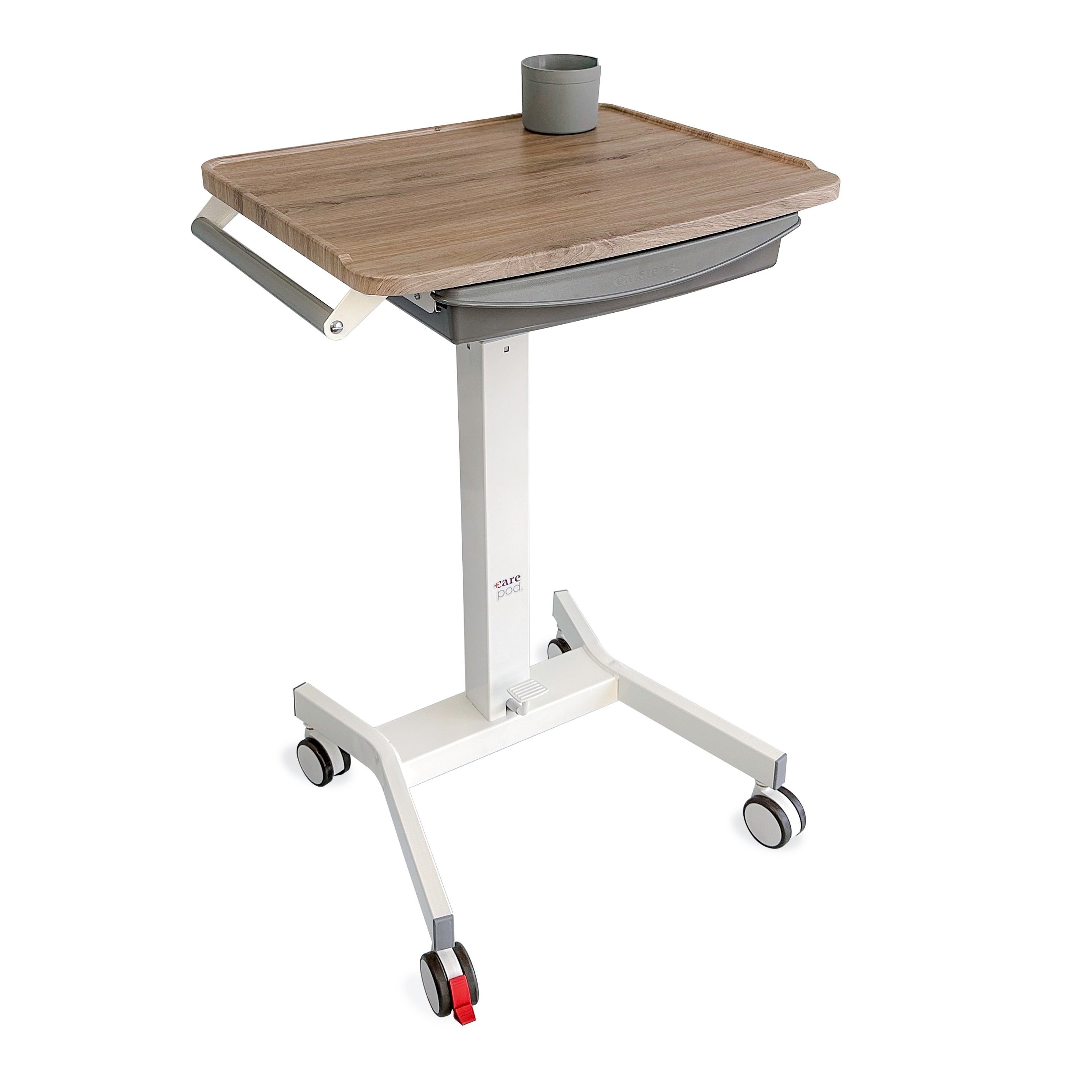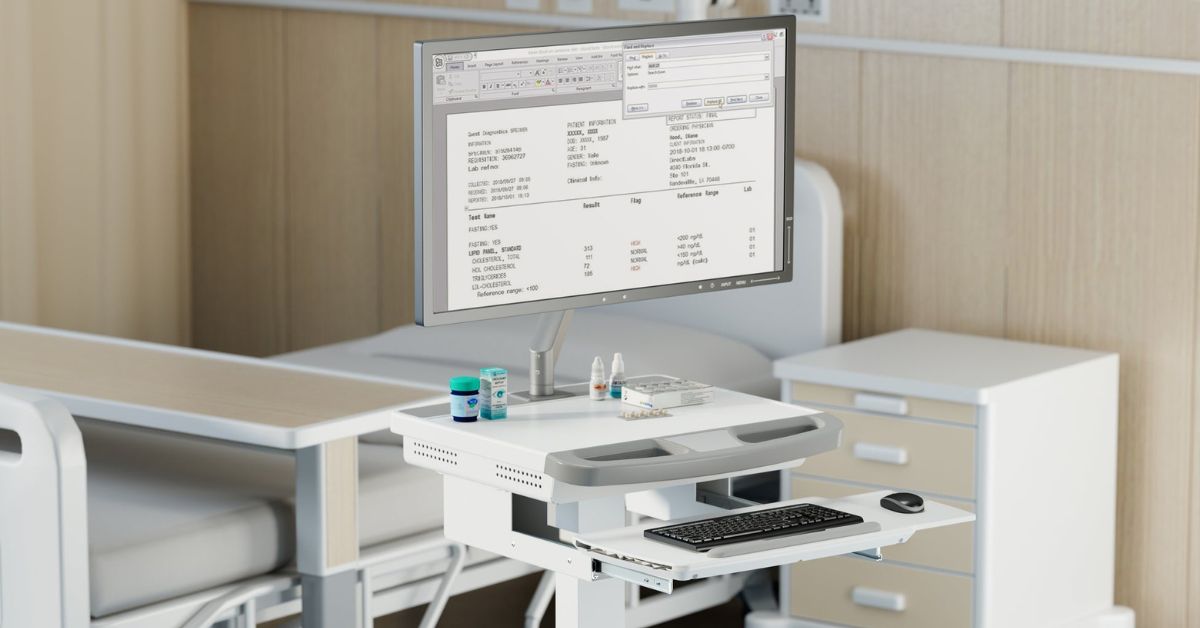
Computer work has become integral to many professions. However, the prolonged use of technology comes with health risks. Understanding these risks is crucial for healthcare professionals who are finding themselves spending more time engaged in virtual care. From musculoskeletal pain to mental health concerns, the hazards of computer work can significantly impact well-being.
Let's explore the health risks associated with computer work and practical ways to mitigate them.
The Rise of Computer Work in Healthcare
The COVID-19 pandemic accelerated the adoption of telehealth and computer work, transforming healthcare services. With patients increasingly preferring virtual consultations, caregivers spend less time moving between patient rooms and more time in front of screens.
While beneficial in many ways, this shift presents new challenges for healthcare professionals. Extended periods of computer work can lead to both physical and mental health issues that require attention.
Understanding Physical Impacts
Prolonged computer use, especially in a healthcare setting, necessitates an awareness of its physical health risks. As healthcare professionals engage in extended hours of screen time, the lack of movement and poor ergonomic practices can lead to various conditions. Below, we delve into the key physical health concerns of continuous computer use.
Musculoskeletal Disorders
Long hours spent hunched over computers contribute to musculoskeletal disorders. Poor posture can result in neck and back pain, while repetitive motions may lead to carpal tunnel syndrome. These conditions affect physical comfort and the ability to provide quality care.
Sedentary Lifestyle Concerns
Sedentary behavior, characterized by long periods of inactivity, poses significant health risks and is linked to cardiovascular disease, type 2 diabetes, and metabolic syndrome. Regular movement is essential to counteract these effects and promote overall health and vitality.
Eye Strain and Vision Issues
Prolonged computer use can lead to digital eye strain, characterized by dry eyes, blurred vision, and headaches. The strain arises from the effort the eyes require to focus on digital screens for extended periods. Factors contributing to eye strain include screen glare, improper lighting, and prolonged focus without breaks. Adhering to the 20-20-20 rule—taking a 20-second break to look at something 20 feet away every 20 minutes—can help reduce strain and maintain eye health.
Mental Health Implications
Mental health can suffer from extended computer work. Studies reveal a correlation between prolonged sitting and higher rates of depression and anxiety. The lack of physical activity and the demands of virtual caregiving may exacerbate these issues.
Engagement in computer work for extended periods often leads to declining quality of life. The lack of movement and increased stress levels can result in dissatisfaction and reduced well-being, impacting personal and professional lives.
Implementing Technology for Well-being
Health-focused tech can transform how healthcare professionals handle computer work. Tools to monitor posture, encourage movement, and manage stress are more accessible. Posture devices provide feedback, while apps remind users to take breaks, reducing sedentary risks. Stress-management apps offer mindfulness exercises. By using this tech, healthcare organizations can better support staff well-being.
Strategies to Mitigate Health Risks
Addressing the health risks associated with computer work requires proactive strategies that healthcare professionals can adopt to protect their physical and mental well-being. By integrating these practices into daily routines, individuals can enhance their health while maintaining the efficiency of their work.
Regular Breaks and Stretching
Implementing scheduled breaks and incorporating stretches into the workday can significantly reduce the risks of a sedentary lifestyle. Stretching exercises tailored for the neck, back, wrists, and shoulders can be particularly beneficial. Additionally, taking short walks or simply standing up and moving around regularly helps combat the adverse effects of prolonged sitting.
Mindfulness and Stress Management
Incorporating mindfulness techniques and stress management strategies can counteract the mental health implications of computer work. Deep breathing exercises, meditation, and time management techniques help reduce stress and enhance focus. Allocating time for leisure activities and ensuring proper work-life balance is crucial for maintaining mental health.
By embracing these strategies, healthcare professionals can safeguard their health, ensuring they remain effective while minimizing the potential health risks of prolonged computer use.
The Role of Ergonomic Workstations
Ergonomically designed workstations, such as wall-mounted computer workstation cabinets, play a crucial role in fostering a healthier work environment in the healthcare sector. Ergonomic desks and chairs can significantly reduce the risk of physical discomfort and injury associated with prolonged computer use. Equipping your workspace with adjustable monitor stands to ensure screens are at eye level can minimize neck strain. Chairs with lumbar support help maintain the spine's natural curve, promoting good posture. Additionally, a keyboard and mouse that support natural wrist positioning can reduce the risk of repetitive strain injuries.
Building a Supportive Work Culture
Creating a culture that prioritizes well-being is essential in healthcare environments. However, when your workspace is mainly filled with computer work, work culture can easily be put on the back burner. Leadership should encourage open conversations that emphasize the importance of self-care and provide the infrastructure to support it.
A sense of community and collaboration enhances workplace satisfaction with team activities, shared breaks, and opportunities for social interaction. A supportive environment fosters resilience and reduces the stress associated with computer work.
The Future of Computer Work in Healthcare
As technology evolves, healthcare professionals must adapt to new tools and methods to keep up. Advanced digital systems, such as electronic health records and telemedicine, require medical practitioners to update their skills and embrace new ways of caring for patients.
Incorporating ergonomic solutions, such as mobile workstations and user-friendly interfaces, are important. Prioritizing health-conscious practices, including taking regular breaks and using mindfulness techniques, will also be crucial in digital healthcare settings. By focusing on these areas, healthcare providers can smoothly transition into a more technologically advanced future while maintaining high patient care and well-being standards.
Understanding and addressing the health risks of computer work is essential for healthcare professionals engaged in virtual care. Organizations can enhance caregiver well-being by promoting healthy habits, incorporating ergonomic solutions, and fostering a supportive culture.
Encouraging regular breaks and providing access to physical and mental health resources can further mitigate these risks. By prioritizing these measures, healthcare professionals can maintain their health while delivering exceptional patient care.







